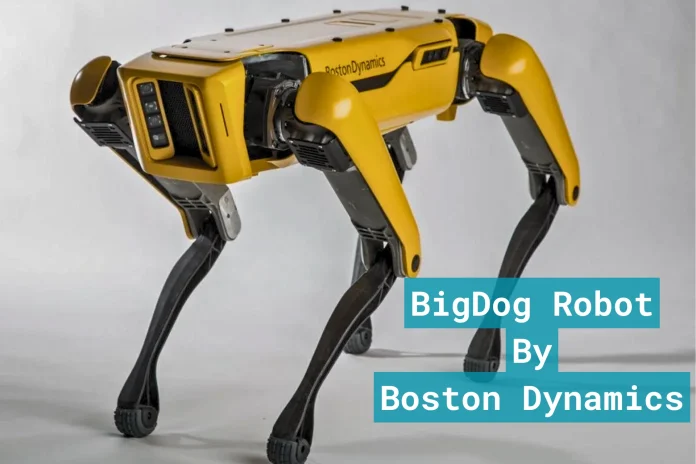Boston Dynamics, a renowned robotics company known for its innovative creations, has a long history of developing new and advanced robots. Among their most fascinating creations is the BigDog robot, a dynamically stable quadruped robot designed for rough terrain navigation.
Conceptualization and Development
The BigDog project originated in 1995 with the Defense Advanced Research Projects Agency (DARPA) funding. A team of engineers at Boston Dynamics, led by Marc Raibert, envisioned creating an unmanned-legged vehicle capable of superior mobility compared to traditional wheeled or tracked robots, particularly on challenging terrains. The ideal system would be able to travel any track navigable by humans or animals, operate for extended durations, and carry its fuel and payload.
The BigDog project involved collaboration between Boston Dynamics, Foster-Miller, the NASA Jet Propulsion Laboratory (JPL), and the Harvard University Concord Field Station. This collective effort brought together expertise from various disciplines, leading to unique advancements in robot design, locomotion, and control systems.
Technical Specs of BigDog Robot
BigDog is a wonder of engineering, with a unique design and impressive capabilities. Here’s a detailed review of its technical aspects:
Power Source:
BigDog is powered by a two-stroke, single-cylinder gasoline engine with approximately 15 horsepower. This engine drives a hydraulic pump, powering the hydraulic actuators that control the robot’s legs.
Leg Structure:
Each of BigDog’s four legs has four hydraulic actuators, two at the hip joint and one at the knee and ankle joints. This complex system of actuators enables a wide range of motion and exceptional stability.
Onboard Computing:
BigDog has a ruggedized PC/104 computer board stack running a Pentium 4-class processor. This onboard computer system is responsible for processing sensor data, controlling the hydraulic actuators, and maintaining balance.
Dynamic Stability:
BigDog’s brilliance lies in its dynamic balance system. Unlike statically stable robots that rely on a broad base for stability, BigDog employs a more dynamic approach. Sensors throughout the robot’s body continuously monitor its posture and leg positions. This real-time data is fed into the control system, which adjusts the leg movements to maintain balance even on uneven terrain.
Also check: H1 Humanoid Robot: World’s Fastest Robot.
About BigDog Robot’s Unique Capabilities
BigDog’s capabilities are truly remarkable. Here are some of its critical successes:
- Rough Terrain Navigation: BigDog excels at navigating rough terrain, including rocky slopes, uneven surfaces, and snow. Its dynamic balance system allows it to maintain footing and move even on challenging inclines and declines.
- Carrying Capacity: BigDog can carry a payload of up to 400 pounds, making it a valuable asset for transporting supplies in difficult-to-reach locations.
- Endurance: BigDog is designed for sustained operation. It can travel for several kilometres on a single fuel tank, making it suitable for long-range missions.
- Adaptability: BigDog’s control system can adapt to different terrains and situations. Sensors in its legs can detect changes in the ground surface, and the control system adjusts the robot’s walk accordingly.
Legacy of Boston Dynamics Robots
While BigDog was not ultimately deployed for military applications as initially envisioned, its legacy is undeniable. This new robot created the way for the development of future generations of advanced-legged robots at Boston Dynamics, including the agile Spot quadruped robot and the bipedal Atlas robot. The lessons learned from BigDog’s design and control systems continue to influence advancements in robot locomotion and stability, with potential applications in various fields, including search and rescue, disaster response, and industrial automation.
Also Read! Kengoro Robot Can Sweats to Cool Down Instantly
The world of legged robots is constantly evolving, and BigDog Robot has achieved a significant milestone in this ongoing journey. As Boston Dynamics and other robotics companies continue to refine and advance legged robot technology, we can expect to see even more capable and versatile robots emerge in the years to come. These robots could revolutionize various industries and redefine our understanding of automation and mobility.



